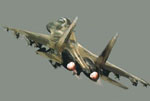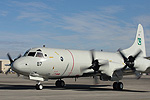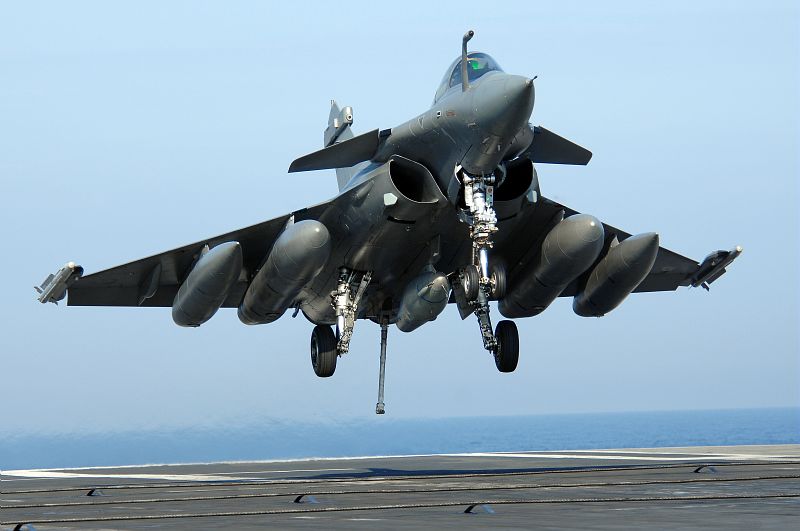SOBRECOSTES Y RETRASOS
El fiasco del A400M pone en peligro a Airbus
7.500 millones de euros de coste adicional y tres años de retraso son las credenciales del último programa de Airbus: el A400M, un moderno avión de transporte militar que ha terminado atragantándose por las interferencias políticas.
Galería de fotos
Así es el A400M
Ver el vídeo
Vuelo inaugural del A400M
Viajes: hoteles | coches | vuelos
fines de semana | ofertas último minuto
Fotos: Así es el A400M
Vídeo: Vuelo inaugural del A400M
2010-01-18
Imprimir
Enviar
Corregir
Comentar
FERNANDO DÍAZ VILLANUEVA
Nadie está a gusto en Airbus. Los números no funcionan desde hace cuatro años, cuando el euro empezó a revaluarse con respecto al dólar haciendo que la producción de la compañía europea perdiese competitividad. Los problemas de la empresa, englobada dentro del grupo aeronáutico EADS, se reflejan en su cotización en Bolsa. La acción ha pasado de los 35 euros del primer cuarto de 2006 a los 14,5 que se pagaba esta mañana en los parqués europeos, muy lejos de los 61 dólares de Lockheed Martin o los 76 de Boeing.
Los aviones que fabrica Airbus han conseguido plantar cara con éxito a la industria aeronáutica norteamericana, hasta hace dos décadas hegemónica. Gracias a los modelos A320, de medio alcance y entregado en tres versiones; y A340, de largo alcance y con dos versiones principales, una bimotor y otra cuatrimotor que ha jubilado la flota de Jumbos en muchas aerolíneas.
El problema de Airbus es que fabricaba en Europa y se vio muy afectada por el encarecimiento de euro, su divisa de referencia para exportar. Por ello abrió una fábrica en la ciudad china de Tainjin. En junio pasado entregó su primer A320 enteramente fabricado en Asia, un mercado emergente que, según se estima, va a necesitar 3.000 aviones comerciales en los próximos años para atender a la creciente demanda de vuelos, especialmente interiores, para los que la gama A320 está especialmente indicada.
La entrada en China, el lanzamiento del A380, un auténtico gigante del aire del que ya se han entregado 24 unidades a cuatro aerolíneas, y el proyecto del A400M, el primer avión de Airbus concebido en origen para uso militar han sido los tres grandes proyectos de la década de termina. Una década en la que Airbus se ha consolidado como líder del mercado aeronáutico mundial. Entre 2000 y 2009 los europeos han vendido 6.173 aeronaves frente a las 5.927 de los norteamericanos.
El desastre del Airbus 400
Con lo que no contaban los ejecutivos de Airbus, consorcio paneuropeo radicado en la ciudad francesa de Toulouse, es con el fiasco de su primera incursión en serio dentro del campo de la aviación militar. El A400M es un programa estatal que nació en 2003 de un acuerdo entre los Gobiernos de España, Italia, Francia, Alemania, Bélgica, Luxemburgo y Turquía para dotar a sus ejércitos de un avión de transporte moderno, y, ya de paso, lanzar un torpedo en la línea de flotación de la norteamericanas Lockheed Martin, fabricante de los Hercules y los Galaxy.
El acuerdo fijaba que, entre todos, comprarían a Airbus 212 unidades. Dos años después se quedarían en 180, el primer vuelo tendría lugar en 2008 y la primera entrega un año después.
Los ingenieros de Airbus se pusieron manos a la obra y diseñaron un avión militar de última generación. Una elegante aeronave movida por cuatro turbohélices y preparada para transportar 37 toneladas de carga o 116 soldados totalmente equipados a 780 km/h. Sobre el papel muy competitivo. La mejor versión del Hercules sólo admite 19 toneladas de carga, 64 soldados y viaja a un máximo de 670 km/h.
A partir de ahí el proyecto se torció. Italia abandonó el compromiso y el resto de países insistieron en que el programa se desarrollase en tan sólo seis años y medio, cuando lo normal en un avión de estas características es que su desarrollo se demore unos doce.
Por interferencias políticas se designó Sevilla como lugar para ensamblar el avión, donde hubo de levantarse una planta completa, ya que las instalaciones de la española CASA no eran lo suficientemente grandes para un proyecto de semejante magnitud. Y por interferencias políticas se escogió el motor Europrop TP400 y no un Pratt & Whitney, que era la elección de Airbus Military.
Europrop es una compañía creada por varias empresas europeas para fabricar los motores del A400M. La forman la alemana MTU Aero Engines, la británica Rolls Royce, la francesa Snecma, la española Sener y la turca TEI. Cada una de ellas tiene un peso en la compañía proporcional al que sus respectivos países tienen en la compra del A400M una vez esté terminado.
Las prisas y los compromisos políticos se tradujeron en retrasos. La compleja maquinaria logística de Airbus funcionó, pero no todas las partes llegaron a tiempo. El vuelo inaugural, previsto para principios de 2008 se canceló porque hasta febrero no llegaron los motores Europrop y no fueron completamente integrados en el avión hasta el mes de junio.
En marzo se hizo la primera prueba estructural y se anunció el vuelo inaugural para julio, pero también se canceló. Para entonces las presiones financieras y políticas empezaban a ser considerables. El 26 de junio de 2008 el avión fue presentado a la prensa en Sevilla, salió del hangar y volvió a entrar. Le faltaba aún año y medio para volar. Finalmente el vuelo inaugural se produjo, también en Sevilla, hace poco más de un mes, el 11 de diciembre de 2009, con casi dos años de retraso.
Airbus, entretanto lleva un año advirtiendo que, conforme al calendario, la primera unidad no sería entregada hasta 2012. La prensa le hincó el diente al caso. El Financial Times se enteró de que al avión tenía algo de sobrepeso, 12 toneladas le sobraban para poder volar con la carga que prometía. El jefe de Estado Mayor de la Luftwaffe habló de “desarrollo desastroso” y aplazó la incorporación del A400M en la Fuerza Aérea alemana hasta 2017.
Entretanto, los mismos Gobiernos que habían creado la necesidad de un avión militar de carga, empezaron a buscar alternativas ante el retraso. Lockheed Martin ha reconocido que Francia y el Reino Unido andan buscando alternativas en el C-130J “Super Hercules”, la última generación de los Hercules.
Un avión que podría provocar la quiebra
EADS, por su parte, solicita dinero a los Estados comprometidos con el programa para continuar. El coste que el Airbus A400M le supone a EADS cada mes oscila entre los 100 y los 150 millones de euros. Si no llegan las ayudas públicas el consejero delegado de EADS, Louis Gallois, ya ha advertido que cancelará el programa este mismo año. “Cometimos un error en el pasado cuando aceptados un proyecto con un presupuesto fijo, al menos podríamos compartir las cargas de estos errores” ha asegurado este mes.
Por de pronto, la empresa ya ha puesto 2.600 millones de euros sobre la mesa y lleva, hasta la fecha, gastados otros 7.500 millones a causa de los retrasos y un incremento de los costes del 25% según avanzaba el programa. El consejero delegado de Airbus, Tom Enders, ve un serio peligro para Airbus que, según sus propias palabras “no piensa consentir”. El A400M puede llevarse por delante al primer fabricante de aviones del mundo, un conglomerado industrial que da trabajo a más de 50.000 personas en ocho países. Sólo en España tiene operativas tres factorías: en Madrid, en Sevilla y en Cádiz.
Este año se despejará el futuro del Airbus A400M, la mayor aeronave jamás fabricada en suelo español. Si los Gobiernos ceden y provisionan el proyecto en 2012 podrían comenzar las entregas. El Ejército español ha pedido 27, el alemán 60, el francés 50, el británico 25, el turco 10, el belga 7 y Luxemburgo 1. Lo que EADS no parece dispuesta es a inmolarse en nombre de un capricho de los políticos que no termina de levantar el vuelo.
http://www.libertaddigital.com/economia ... 276381597/
















